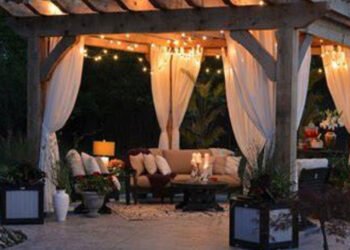When it comes to creating shaded and sheltered spaces for outdoor events and activities, both canopy tents and awnings offer viable options. These tents, also known as pop-up gazebos or branded gazebos, are portable and versatile structures that provide coverage and can be customised to suit specific needs. On the other hand, portable awnings are lightweight and easy-to-use solutions that offer flexibility and convenience.
In this blog, we will compare canopy tents and awnings, exploring their features, benefits, and applications to determine which is better suited for different situations.
Canopy tents: Portable and customisable
Canopy tents are a popular choice for outdoor events, trade shows, exhibitions, and other gatherings that require temporary shade and shelter. These tents are characterised by their collapsible frame, which allows for easy setup and transportation. Here are some key features and benefits of these tents:
Portability: The tents are designed to be highly portable. They can be easily transported from one location to another and require minimal effort for setup and takedown. The collapsible frame and compact size make them ideal for events that require frequent moving or for individuals who value convenience.
Customisation: The tents offer a high level of customisation. The fabric canopy can be printed with branding, logos, or promotional messages, making them an effective marketing tool for businesses and organisations. Branded gazebos provide a visually appealing and professional presence, ensuring that your brand stands out at events.
Versatility: Canopy tents come in various sizes, shapes, and styles to accommodate different event requirements. They can be expanded or reduced in size, allowing for flexibility in layout and capacity. Additionally, canopy tents can be accessorised with sidewalls, windows, and flooring options to create a more enclosed and tailored space.
Durability: The frames of tents are typically made of lightweight yet sturdy materials such as aluminium or steel. The aluminium frame gazebos ensure their durability and resistance to various weather conditions. The fabric canopy is often water-resistant and UV-protected, providing additional protection against rain and sun exposure.
Portable awnings: Lightweight and convenient
Portable awnings are lightweight and easy-to-use solutions that offer shade and protection from the elements. Here are some key features and benefits of the awnings:
Lightweight and compact: The awnings are designed to be lightweight and compact, making them easy to carry and transport. They are ideal for individuals who need a quick and convenient shade solution for outdoor activities such as picnics, camping trips, or beach outings.
Easy setup: Setting up an awning is a straightforward process. Most awnings come with a folding or retractable mechanism, allowing users to quickly extend or collapse the canopy as needed. This ease of setup makes them a popular choice for those who value simplicity and efficiency.
Flexibility: The awnings offer flexibility in terms of adjustability and angle. The canopy can be adjusted to different heights and angles, providing shade at various times of the day and accommodating the changing position of the sun. This adaptability ensures optimal coverage and comfort.
Versatility: The canopies can be used in a variety of settings and activities. They are suitable for picnics, outdoor dining, sporting events, backyard gatherings, and more. Their lightweight design allows for easy repositioning, enabling users to quickly move the awning to different locations as needed.
Comparing canopy tents and portable awnings
Now that we’ve explored the features and benefits of both canopy tents and portable awnings, let’s compare them based on different factors to determine which is better suited for specific situations:
Size and capacity: The tents generally offer larger covered areas compared to awnings. They are better suited for events that require more space, such as trade shows, exhibitions, and larger gatherings. The awnings, on the other hand, are more suitable for smaller-scale activities or personal use.
Customisation: The pop up gazebos excel in terms of customisation options. With their fabric canopies that can be printed with branding and promotional messages, they offer a powerful marketing tool for businesses. The awnings, while not as customisable, are still available in a range of colours and designs to suit individual preferences.
Portability and setup: Both structures are designed for portability and easy setup. However, portable awnings are generally lighter and more compact, making them even more convenient for individuals or small groups who require a quick and hassle-free shade solution.
Durability: The tents, especially aluminium frame gazebos, are often built with sturdy frames and durable fabrics, allowing them to resist various weather conditions. The awnings are also designed to be durable, but they may be more susceptible to wear and tear due to their lightweight construction.
Conclusion
Both structures offer valuable shade and shelter solutions for outdoor activities. The choice between the two depends on specific needs, preferences, and the intended use. Ultimately, assessing your requirements and considering the features and benefits of each option will help you make an informed decision that best suits your needs.












